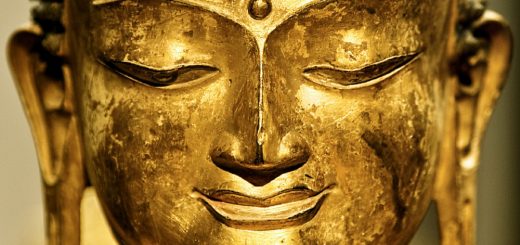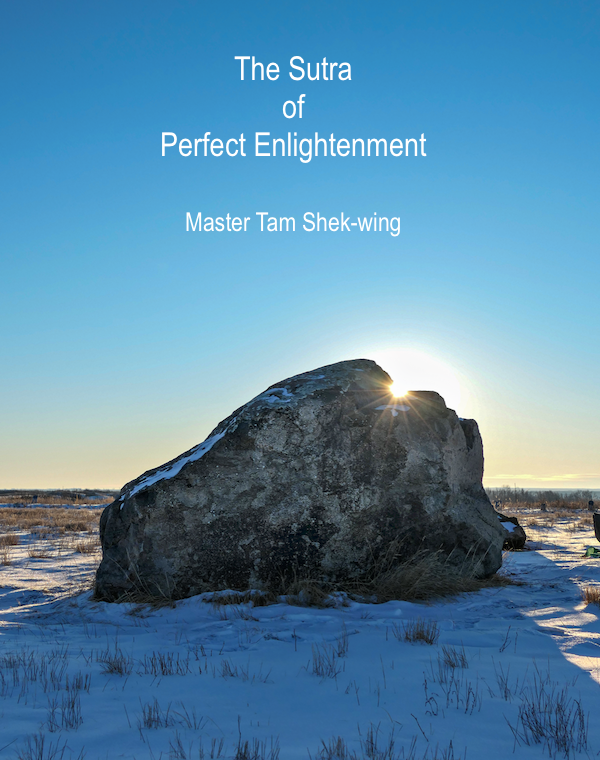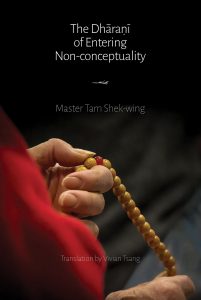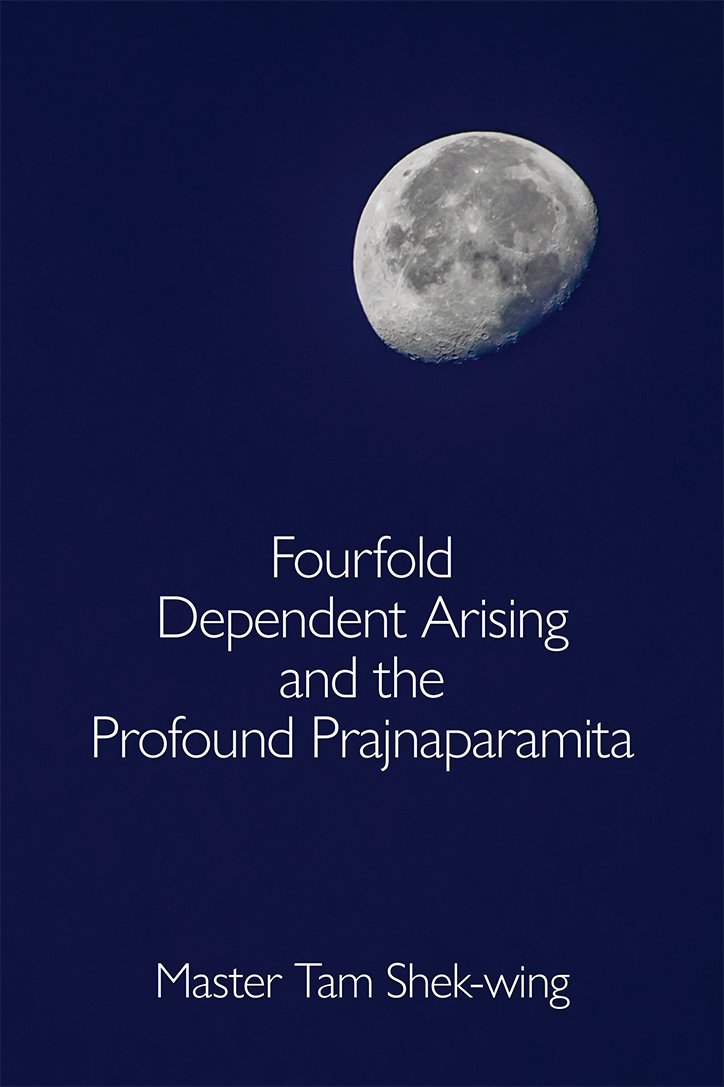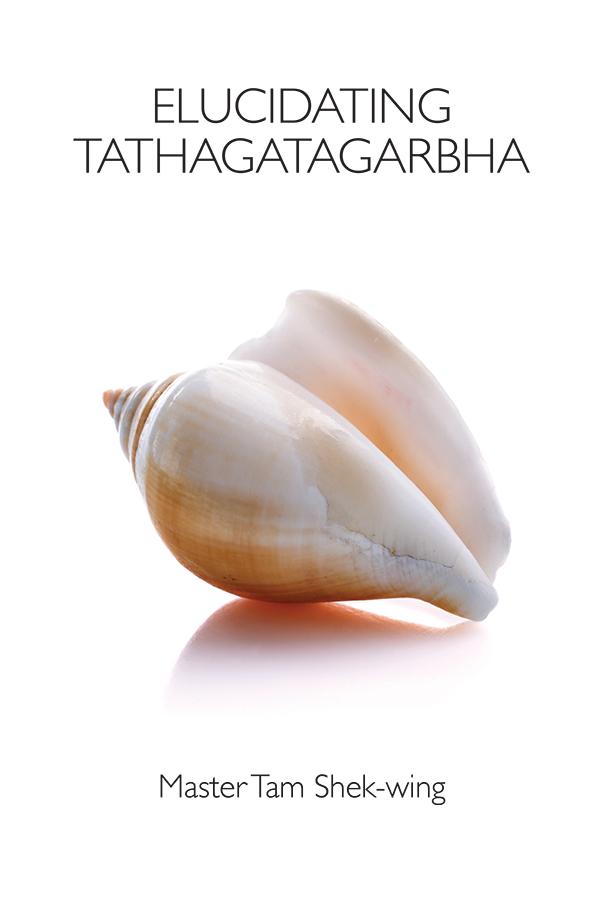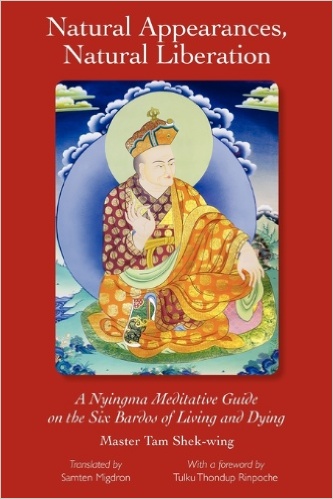New Series: On the Sutra of Perfect Enlightenment
Translator’s Note: Back in 2016. by readers’ request, Master Tam decided to present his commentary to the Sutra of Perfect Enlightenment as an overview to the Buddhist foundation, practice, and fruition. He posted a weekly column on the VBA website (Chinese) over the course of five months. The content was subsequently edited and published in 2020 as The Secret Meaning of the Sutra of Perfect Enlightenment, which is the 12th book of a series called Beyond Words. This commentary offers a practical overview and clarifies important questions on the perfection of enlightenment and the Buddha-Within. We have now translated the book into English, and for the next few months, we will turn post the content as a monthly column.
This post is part 1 of 4 of Master Tam’s introduction to The Sutra of Perfect Enlightenment [Part 2, Part 3, Part 4].
A Brief Introduction
Some readers have told me that the Beyond Words series, as well as my online column, are very difficult to understand. While I believe this to be the truth, I followed the stages of practice in prioritizing my books. If the readers go along with the stages as well, instead of reading them in random order, the content should be relatively easy to follow, one should arrive at a gradual understanding of the Buddha-Within (Tathāgatagarbha, a teaching that is inclusive of the teachings of profound prajnaparamita, non-duality, and practices of the great perfection). Reading randomly, I suspect that one ends up with partial impressions. To solve this problem, it is important to provide a more complete picture as a foundation. When I followed the stages to present Buddha-Within, I followed the Tibetan Buddhist tradition of the foundation, path, and fruition in the Ultimate Great Middle Way (Maha-Madhyamaka), within which considerable teachings are considered “profoundly secret.” In other words, they point to the hidden meaning of the Buddha-Within. Without a more complete picture in mind, merely following the meaning of the words, the secret meaning will remain obscured. Otherwise, why are they called “profoundly secret”?
In the Beyond Words series, each book is intended to present the secret meaning of the featured scripture. For secret meanings that are beyond the scope of the scripture, one then has to seek out other scriptures that are relevant. Perhaps this is the shortcoming of the series. To compensate, after some consideration, I have decided to make use of the Sūtra of Perfect Enlightenment, because this text is in fact inclusive of the secret meaning to the foundation, path, and fruition of the Ultimate Great Middle Way.
“Perfect enlightenment” refers to the primordial awareness at enlightenment. But what is the awareness of the primordial awareness? It can be said to be a realm that is “felt” (awareness). However, when said this way, there is also a separation of subject and object (“objectification”). As in our day-to-day reality, there is such a separation (who is feeling and what is being felt). For example, we look at someone, whether we find him elegant or messy, the feeling of elegance or otherwise is a state-of-mind, what is being felt. Whenever there is a separation between subject and object, there also exists conceptuality, such that there is a distinction between elegance and mess.

From a Buddha’s perspective, while “awareness” is the wording, it cannot be said to be a “feeling.” If there exists a feeling (object), there also exists an experiencer (subject). This is different for a buddha. Because the realization transcends the distinction of subject and object, the awareness is no longer an objectification. It is also said to be anuttara-samyak-saṃbodhi, which was translated as “the ultimate correct pervasive awareness” (無上正遍知) in the Chinese Buddhist Canon and was later changed into “the ultimate rightly equanimous correct awareness” (無上正等正覺). Here, the scripture calls it the “perfect enlightenment” in place of “the ultimate rightly equanimous correct awareness.” Calling it “perfect” is to emphasize that a buddha’s realm of realization is perfect. Perfection is when the conditions of being “ultimate,” “rightly equanimous,” and “correct” are satisfied.
Perfect enlightenment is Buddha’s wisdom realization. To emphasize the realization of wisdom, some translators in the past refer to the “bodhi” portion of anuttara-samyak-saṃbodhi as the mind that is aware, to highlight the wisdom mind. The realm of this awareness is also the inner realm of wisdom realization, labelled as the dharmakāya, labelled as the Buddha-Within, labelled as the non-duality of bliss and emptiness, labelled as the Great Perfection, labelled as the Great Seal (Mahamudra), labelled as the profound Prajñāpāramitā, labelled as the teaching entering non-conceptuality.
Therefore, the name of Perfect Enlightenment is inclusive of the triad of foundation, path, and fruition. The foundation is the view, labelled as the non-duality of bliss and emptiness; the path is the basis for meditation and observation, labelled as the Great Perfection or the Great Seal; the fruition is the realization of the ultimate meditation and observation, labelled as the Buddha-Within, or entering non-conceptuality, or the profound Prajñāpāramitā, and so on. The substance of this scripture includes all three.

